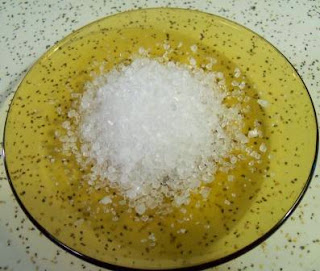I use so many recipes that call for different types of salt and the other day I realized that I don’t really think I know what specifically makes them different. So for those of you like me who would like to be in the salt loop, did a little investigative research and this is what I found.
The Story of Salt
Historically, salt is the oldest known seasoning and has long been used as a means of preserving food, primarily fish and meat, for easy travel and storage.
The harvesting of salt has been happening since the BCs. The salt trade flourished throughout the Mediterranean in the early ADs, and was traded almost ounce-per-ounce with gold because of its extreme usefulness and status as a prestige commodity.
The expression, "not worth his salt," rose from the exchange of salt for slaves in Ancient Greece and the origins of the term "salary" came to us from the ancient Romans whose soldiers were given special salt rations known as "salarium argentum."
SALT
Salt is mass-produced in two ways. It’s harvested by evaporation of seawater or brine from sources such as brine wells or salt lakes. It can also be produced by mining rock salt known as halite which is the mineral form of sodium chloride.
There are two basic types of salt, refined and unrefined (though even “unrefined” is still refined to a point to make it edible).
Refined (edible)
Table salt, or iodized salt, is refined. It’s about 98% sodium chloride, while the rest of its make-up consists of chemical additives which includes magnesium carbonate (makes it flow freely) and iodine (thus iodized salt).
Because table salt is very fine, it dissolves better than other salts, which is why it is so useful in baking and cooking.
A single teaspoon of table salt contains more sodium than a teaspoon of unrefined salt because of the difference in grain consistency.
Unrefined (edible and non-edible)
Completely raw sea salt is too bitter to use for consumption because of the calcium and magnesium compounds found in the salt, so instead it is used for other purposes like bath salts or road salt.
Unrefined salts tend to be coarser and crunchier and because of their grain size tend to be better for preserving food (the larger crystals are able to extract moisture more easily than smaller sized grains).
Unrefined salts tend to lose their flavor when cooked or dissolved so work better as an addition to a dish rather than as an ingredient in the dish.
Types of unrefined salts include:
Fleur de Sel – is a natural sea salt that comes from the surface of evaporated brine in salt pans whose unique flavor varies from region to region.
Sea Salt – obtained by the evaporation of sea water warmed by sunlight in shallow basins; after it’s collected, it’s refined to purify it which helps to improve storage and handling; minerals found in the natural water are left in so flavor and color will vary depending on the region.
Kosher Salt – is named so not because the process of making it is kosher, but because it is used to make meat kosher; kosher salt tends to have larger flatter grains which more easily soak up any extra moisture; and it doesn’t contain preservatives.
Himalayan Salt – is just marketing term for rock salt from Pakistan; it’s reddish or pink in color with some off-white tones; the color is the result of iron oxide in the rock salt.
pink!






2 comments:
I like the pretty pink salt!
I think Martha Stewart once said that salt was her favorite seasoning.
Post a Comment